Welcome to a world where your walls become the canvas of your imagination, where every room is a testament to your personal style and creativity. Whether you’re just dipping your toes into the world of interior design or you’ve been crafting beautiful spaces for years, “8 Simple Wall Art Ideas For Every Room” is here to inspire and guide you. It’s an exciting time to embrace the transformative power of wall art, which can effortlessly elevate your home with charm and character.
In this guide, you’ll discover practical and versatile ideas that breathe life into any room, ensuring your space feels uniquely yours. We understand that decorating can sometimes feel overwhelming, but with these straightforward ideas, you’ll gain the confidence to create stunning focal points that are both easy and rewarding. Imagine the satisfaction of looking around a room that perfectly reflects your vision and style, and know that these techniques make that dream attainable.
Dive into this treasure trove of wall art inspiration, and prepare to see your home in a whole new light. You’ll not only enhance your decor but also unlock the joy of crafting spaces that bring happiness and warmth to your everyday life. With our expert guidance, transforming your walls is not just achievable—it’s an adventure waiting to unfold, promising beauty and personal expression in every room.
Display a Gallery Wall
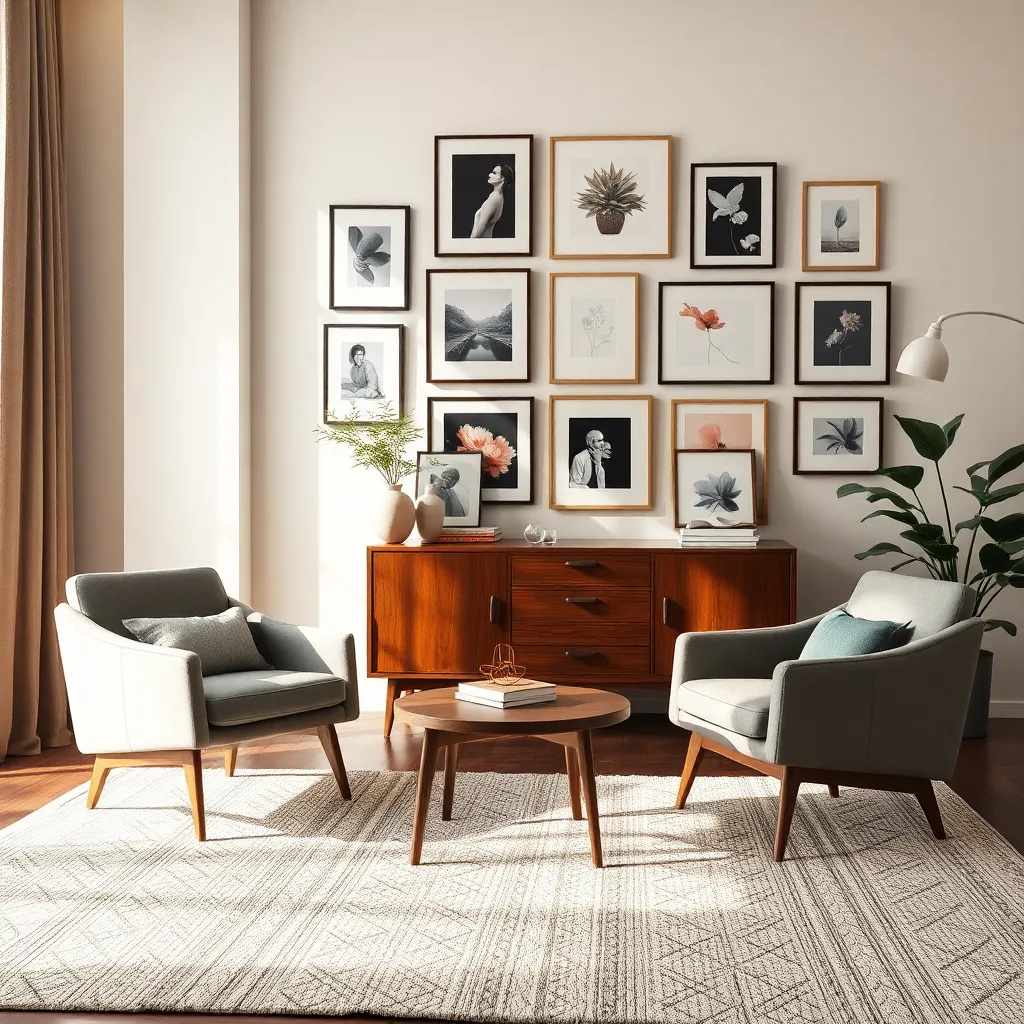
A gallery wall can transform a bland space into a striking focal point, adding personality and visual interest. Begin by selecting a theme or color palette that complements the room; this could be a mix of family photos, artwork, or even a combination of both.
Before you start hanging, lay out your chosen pieces on the floor to find the perfect arrangement. Ensure there is a balance between larger and smaller pieces, with the larger ones acting as anchors in your design.
When it comes to placement, the center of your gallery wall should be at eye level, roughly 57 to 60 inches from the floor. This height helps create a cohesive look and ensures that each piece can be appreciated.
For a more polished look, consider using frames in the same color or material, such as black, white, or natural wood. However, mixing frame styles can create a more eclectic vibe, perfect for a bohemian or vintage-inspired room.
Incorporate Large Statement Pieces
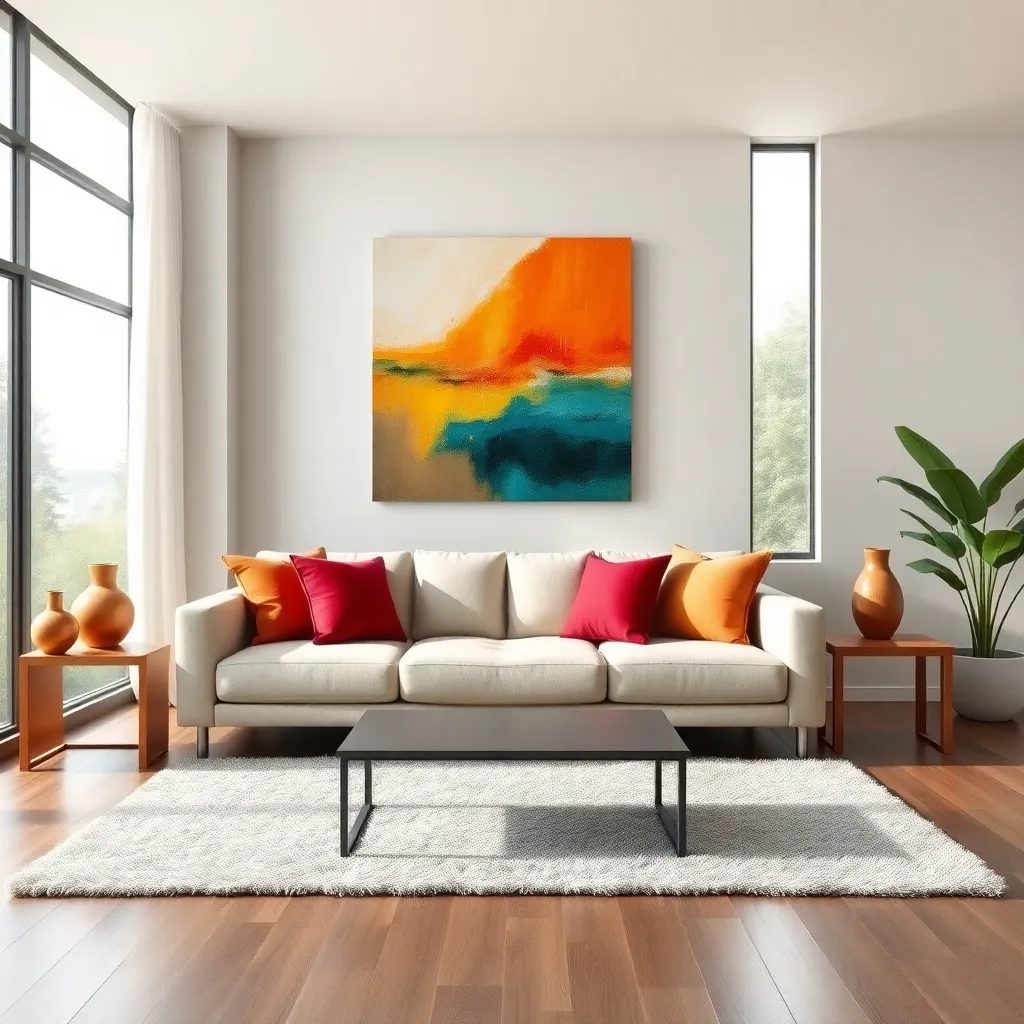
Introducing a large statement piece can instantly transform a room, anchoring the space with a bold focal point. Consider selecting a piece of art that resonates with you personally, as this will not only enhance your decor but also add a personal touch to your home.
When choosing a statement piece, think about the scale and proportion relative to your wall size. A large canvas or framed artwork should take up about two-thirds to three-quarters of the wall space for optimal impact.
Placement is key to showcasing your statement piece effectively. Hang it at eye level, typically around 57 to 60 inches from the floor, to ensure it draws attention without overwhelming the room.
Pair your statement piece with a complementary color scheme to create a cohesive look. If the artwork is vibrant, consider using neutral tones in your furnishings to let the piece shine without competition.
For a more advanced approach, layer lighting to highlight your statement piece and add depth to the room. Use wall sconces or adjustable spotlights to create a gallery-like atmosphere, enhancing the piece’s visual appeal.
Mix Different Frame Styles
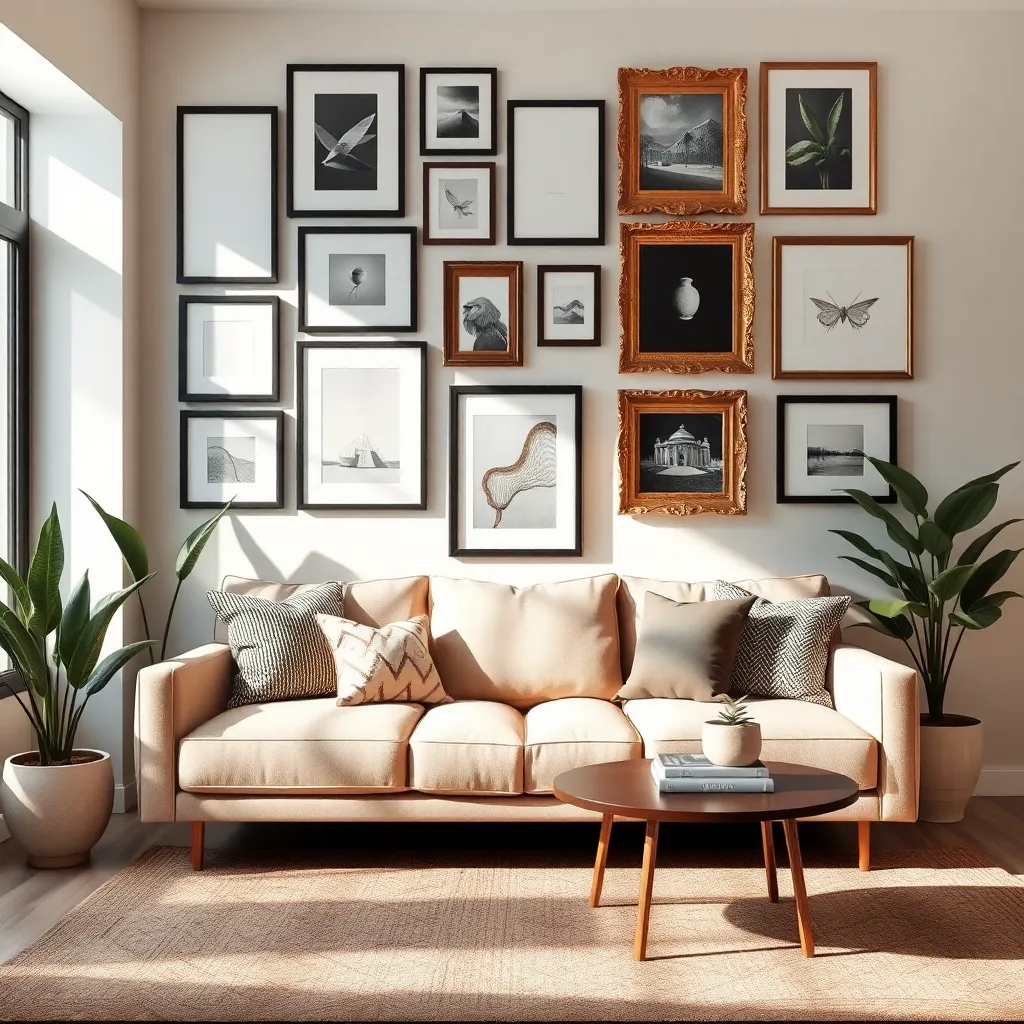
Mixing different frame styles can add depth and interest to your wall art display. Start by choosing a variety of frame styles, such as simple black or white frames, ornate gold frames, and even fun, colorful ones to create a dynamic look.
To maintain cohesion, ensure that at least one element is consistent across the frames, such as color or material. For instance, you might choose frames that are all wooden, but vary in finish from oak to walnut to add subtle contrast.
Arranging your framed art in a gallery wall is a great way to showcase different styles. Begin by laying out your frames on the floor to experiment with different configurations before committing to a design.
Consider the scale and proportion of your frames in relation to the wall space. A balanced mix of large and small frames can create a harmonious layout, while also allowing each piece to stand out individually.
Utilize Floating Shelves for Art
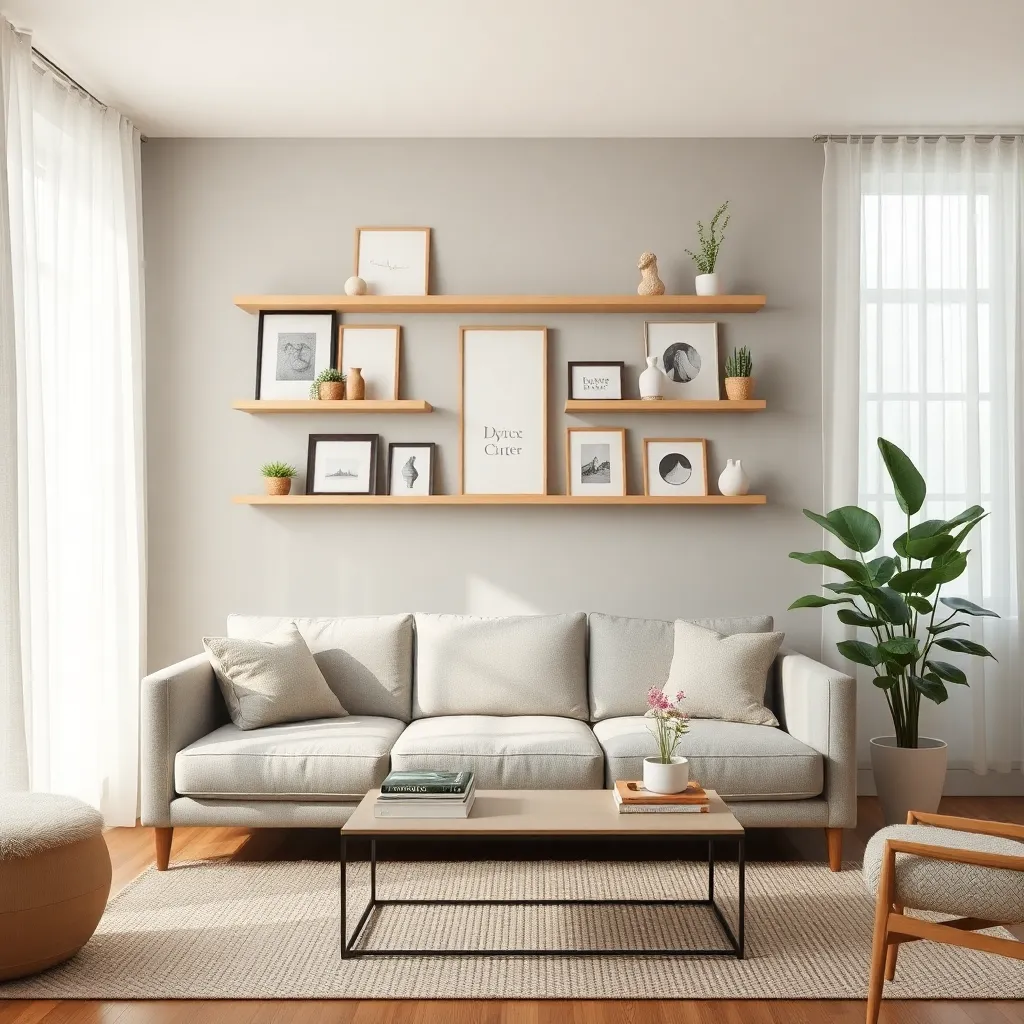
Floating shelves are a versatile way to display art while adding a modern touch to any room. Consider installing them at varying heights to create an engaging visual rhythm that draws the eye upward.
For beginners, start with wooden or metal shelves that complement your existing decor. Pair them with artwork in complementary colors to create a cohesive look that feels intentional and polished.
Advanced decorators might experiment with mixing materials, such as glass and reclaimed wood, to add texture and depth. Layering different sizes and shapes of art pieces on these shelves can create an intriguing gallery effect.
Placement is crucial—ensure shelves are securely mounted and spaced evenly, making the most of your wall space. Experiment with asymmetrical arrangements for a dynamic, contemporary feel that adds character to your room.
Create a Rotating Art Display
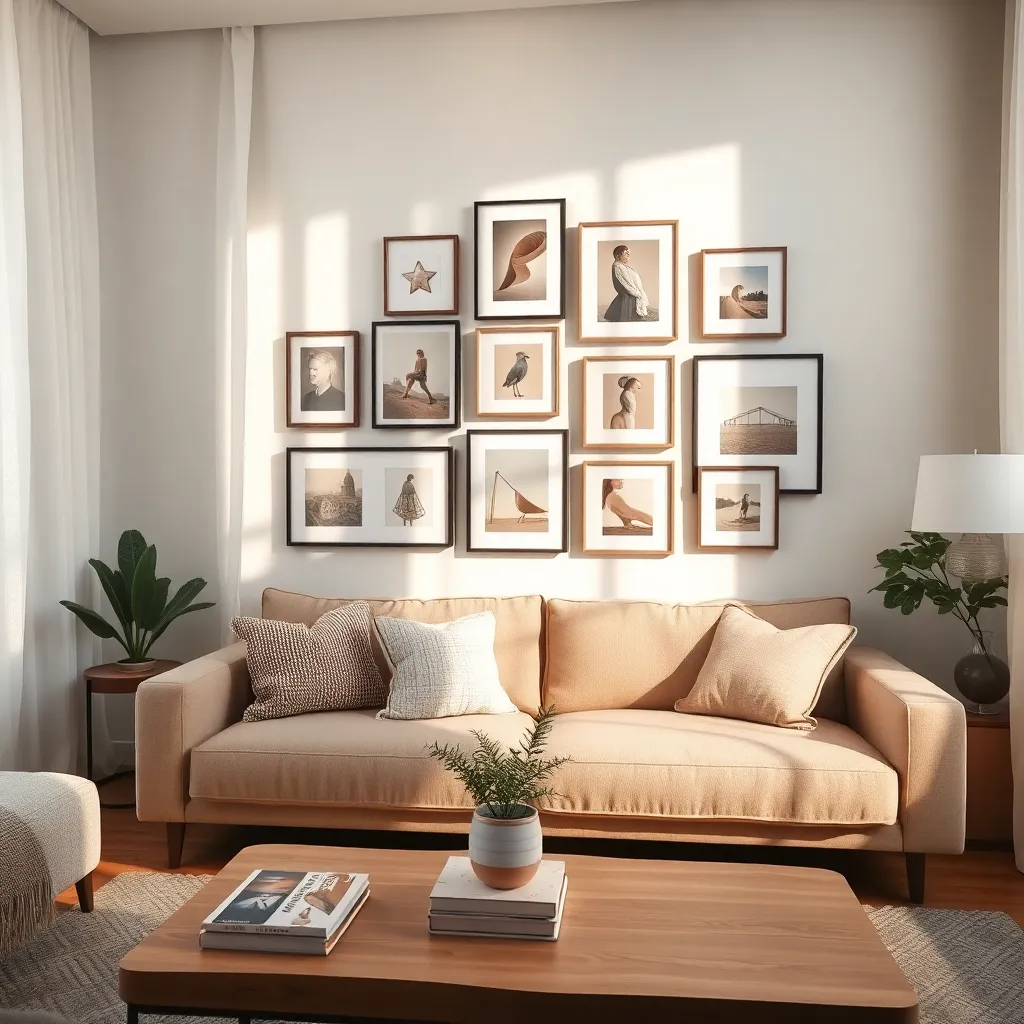
Creating a rotating art display is a dynamic way to keep your living space fresh and engaging. To start, select a wall with ample space, preferably a hallway or a prominent living room wall, where you can easily switch out pieces.
Invest in a sturdy gallery hanging system that allows you to effortlessly change artworks without damaging your walls. This system is especially beneficial for art lovers who enjoy frequently updating their collections with new pieces or seasonal art.
Choose a cohesive color scheme for your frames to ensure a unified look, even as the art changes. Consider using frames in neutral tones like black, white, or wood finishes, which can accommodate a variety of art styles and colors.
For an advanced touch, incorporate art of varying sizes to add depth and interest to your display. Experiment with different layouts, such as a symmetrical grid or a more organic, free-form arrangement, to keep your wall visually stimulating.
Use Wall Decals for Flexibility
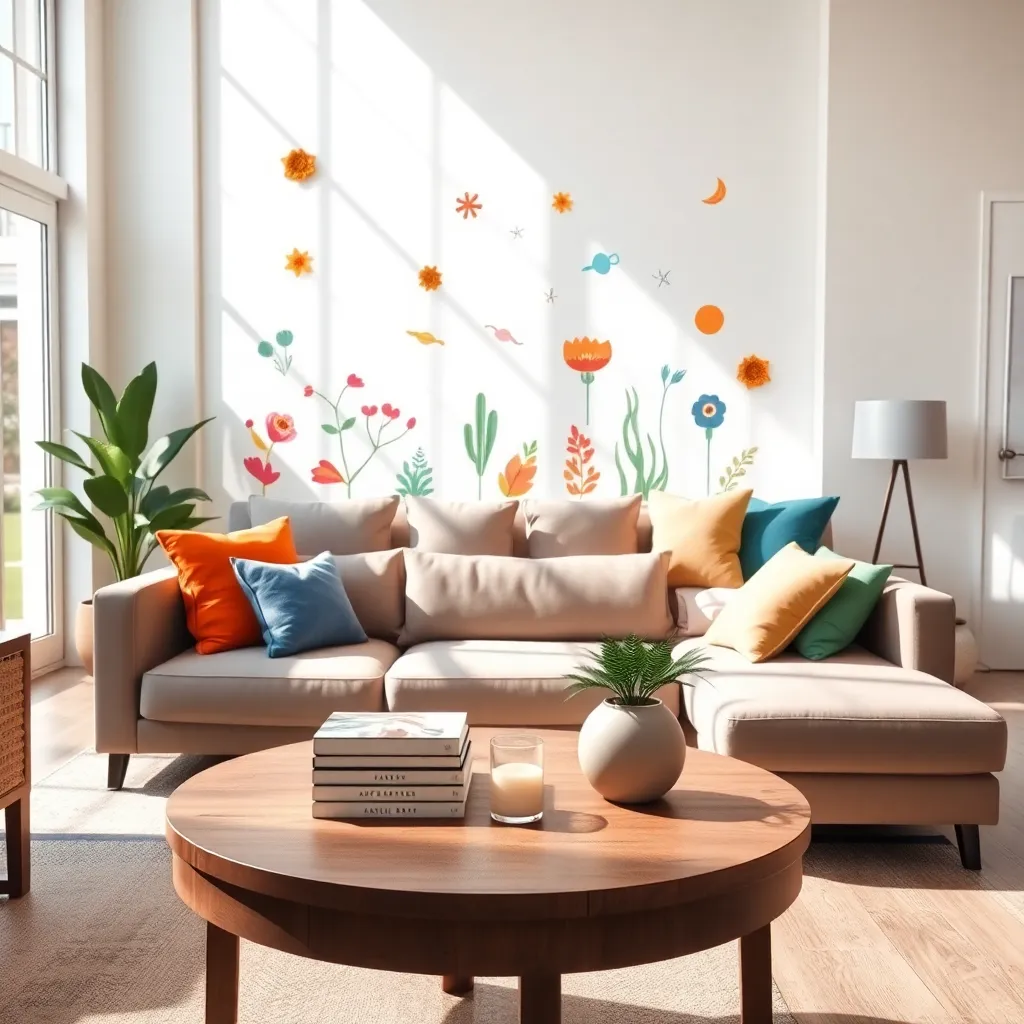
Wall decals offer a flexible and affordable way to transform your space without the commitment of paint or wallpaper. They are available in a variety of designs, from geometric patterns to botanical themes, allowing you to tailor the look to suit your personal style.
For a unified appearance, choose decals that complement your existing color scheme and furniture. Opt for neutral or monochrome decals if your room is already colorful, or go bold with vibrant designs in a more muted space.
Placement is key when using wall decals effectively. Consider applying them above headboards, along staircases, or even as a creative backsplash in the kitchen to add visual interest without overwhelming the space.
For renters or those prone to frequent style updates, wall decals offer an ideal solution as they are easily removable. Experiment with seasonal themes or change designs based on mood to keep your interiors fresh and dynamic.
Arrange Art in a Grid Pattern
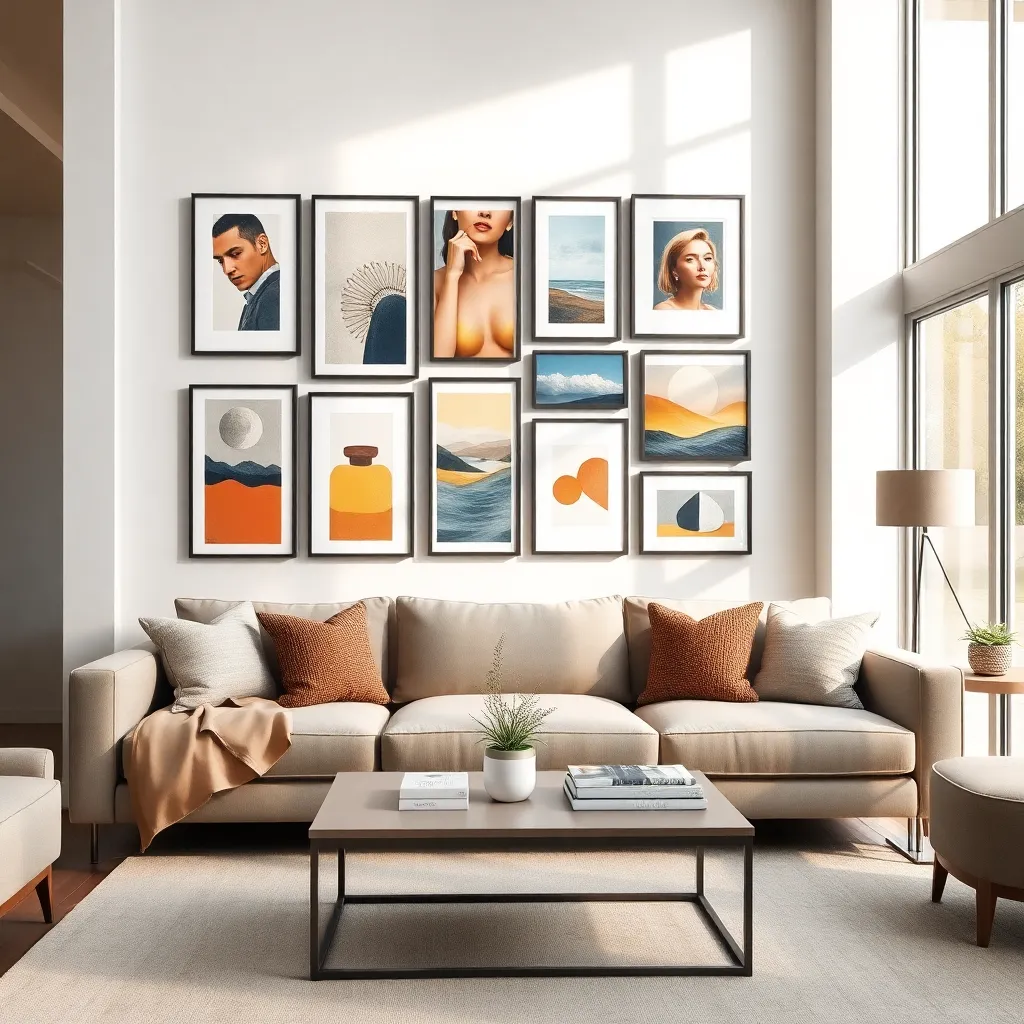
Arranging art in a grid pattern is a timeless way to bring order and sophistication to your space. Begin by selecting a series of artworks that share a common theme or color palette, as this creates a cohesive look. Choose frames that complement your room’s decor, opting for uniform frames for a polished appearance or mixing different styles for a more eclectic vibe.
Proper placement is crucial for achieving a balanced grid. Use a level and measuring tape to ensure equal spacing between each piece, typically around 2-3 inches apart. Hang the grid at eye level, which is generally about 57 inches from the floor to the center of the artwork, to ensure the display is visually accessible.
For a more dynamic arrangement, consider varying the artwork sizes within the grid while maintaining a consistent spacing pattern. This approach works well with a mix of photography and paintings, creating a visually interesting display. Experiment with different layouts on the floor first to find the best configuration before committing to the wall.
Advanced decorators might incorporate three-dimensional pieces into the grid, such as small sculptures or shadow boxes, to add depth and texture. This technique can enhance the overall aesthetic, especially in modern or industrial spaces. Ensure these elements are securely mounted and evenly distributed to maintain the grid’s structured appearance.
Leverage Textured Wall Hangings
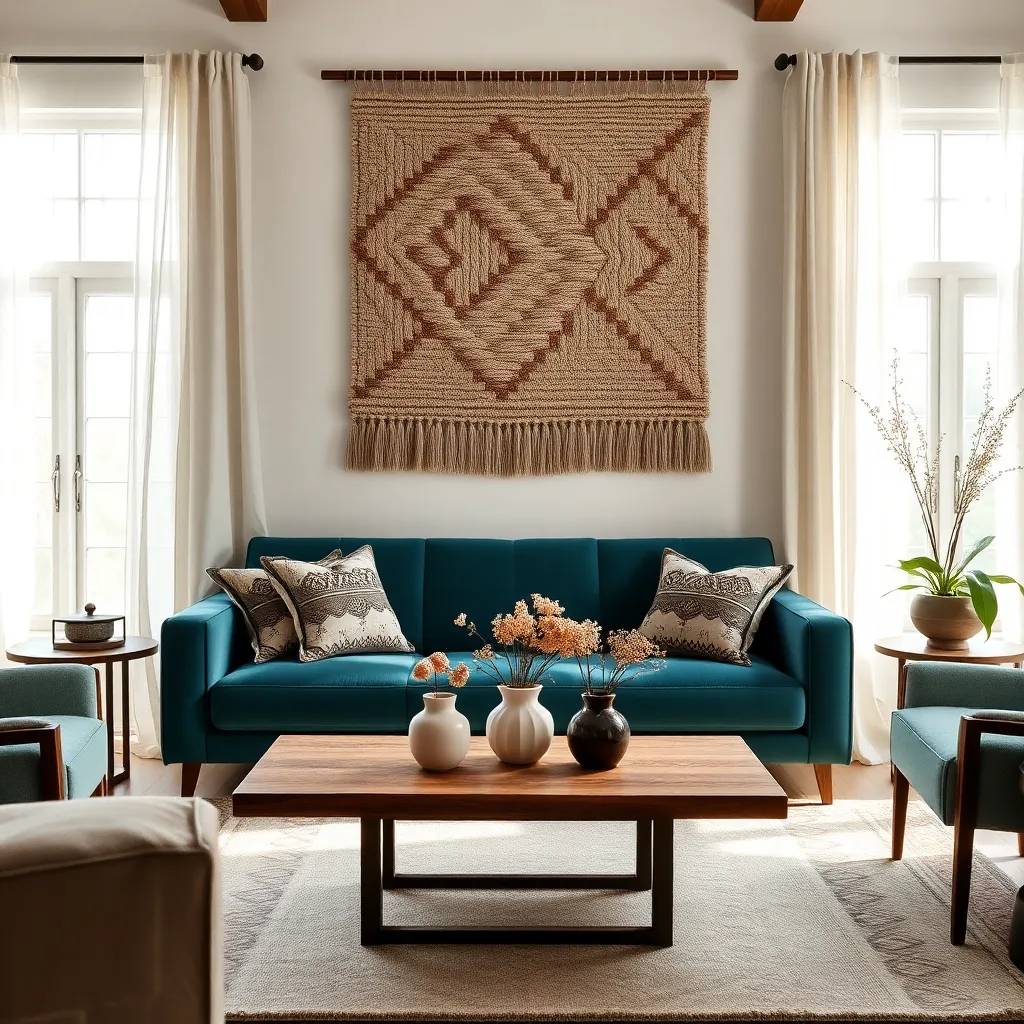
Textured wall hangings are a fantastic way to add depth and interest to any room, making them a versatile choice for decorators. Consider using woven tapestries or macramé pieces for a cozy, bohemian vibe that can be easily integrated into both modern and traditional interiors.
To create a harmonious look, choose wall hangings that complement your existing color scheme. For instance, if your room features neutral tones, opt for hangings in warm beiges or soft grays to enhance the overall aesthetic without overwhelming it.
Placement is key when it comes to maximizing the impact of textured wall hangings. Hang them at eye level or above a piece of furniture like a sofa or bed to draw the eye upward, creating a sense of height and spaciousness in the room.
For those looking to make a bold statement, consider layering multiple textures and sizes on one wall. This approach not only adds visual interest but also allows you to showcase a collection of pieces that reflect your personal style.
Conclusion: Growing Success with These Plants
In exploring the transformative power of wall art across different rooms, we’ve uncovered eight key concepts that can enhance the emotional ambiance of your home and strengthen your relationships. From the comforting tones of your bedroom to the invigorating hues of your living room, each idea is designed to foster connection and understanding. We discussed the importance of personal touches, like family photos and meaningful quotes, and how these can spark conversation and deepen bonds. We also highlighted the role of colors and patterns in creating a harmonious environment that encourages relaxation and open communication.
To take immediate action, choose one room and implement a wall art idea that resonates with you and your partner’s shared journey. This simple step can lead to a more nurturing space that invites warmth and dialogue.
Remember, creating an environment that supports your relationship is an ongoing process. Bookmark this article to revisit these ideas as your relationship evolves and grows. By investing in your surroundings, you’re investing in your partnership’s success, paving the way for a future filled with love and mutual respect. Let these walls be the canvas for your shared story, reflecting the vibrant, evolving nature of your relationship.
